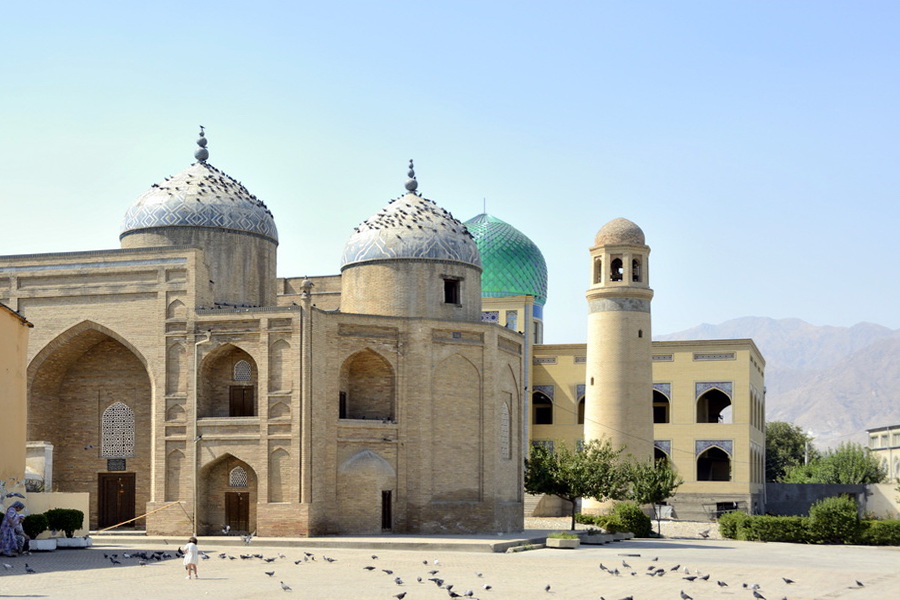The Mausoleum-Mosque of Sheikh Muslihiddin, located in the heart of Khujand, Tajikistan, is a significant historical and religious complex that has stood the test of time. This architectural marvel is dedicated to Sheikh Muslihiddin Khujandi, a revered 12th-century poet and ruler of Khujand. The site has been an important pilgrimage destination for centuries, attracting visitors from across Central Asia.

The origins of the Mausoleum-Mosque can be traced back to the 12th century when Sheikh Muslihiddin was initially buried in the village of Unji, near Khujand. However, his followers later moved his remains to the city and constructed a mausoleum in his honor. The original structure was a modest burial chamber made of baked bricks and adorned with intricate terracotta decorations. Unfortunately, this structure was destroyed during the Mongol invasions in the 13th century.
Reconstruction efforts began in the 14th century, with the mausoleum being rebuilt with a different design, now consisting of two rooms. This new structure existed for some time but was also destroyed for unknown reasons. A more lasting reconstruction took place in the 16th century when a new building was erected on the ruins of the old mausoleum. This new structure was not only a burial site but also served as a place for prayers and ceremonial gatherings, transforming it into a mausoleum-khonako.
Over the centuries, the Mausoleum-Mosque has undergone numerous reconstructions and renovations, reflecting various architectural styles. The current complex consists of a cathedral mosque, a minaret over 20 meters high built in the late 19th century, and ancient burial sites, with the Mausoleum of Sheikh Muslihiddin at its center. The mausoleum itself is a two-story structure with a grand portal entrance and a large dome. Inside, the main hall, known as the ziyoratkhona, is a place for commemoration, while the burial chamber, or gurkhona, lies directly beneath the dome. At the heart of the room is a beautifully crafted wooden sarcophagus, embellished with intricate geometric carvings and vegetal patterns, along with delicate inlays that reflect the artistry of the region.
The Mausoleum-Mosque of Sheikh Muslihiddin stands as a testament to the rich cultural and religious heritage of Khujand. It serves as a place of pilgrimage, a center for religious activities, and a symbol of the city's historical depth. Visitors to this site are often captivated by the tranquility and artistic grandeur of the complex, which continues to be an important landmark in Tajikistan.




































